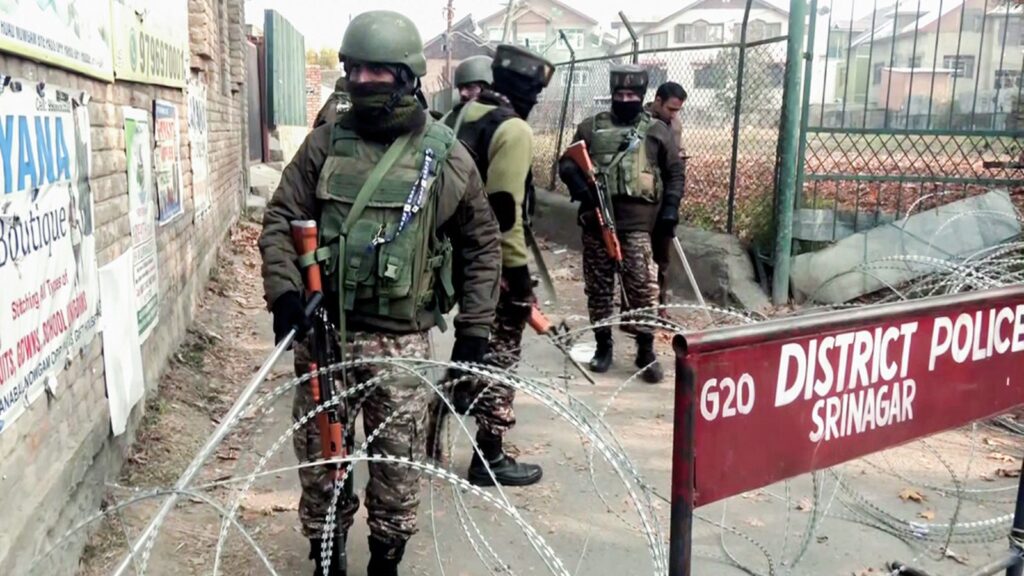The “accidental” explosion that occurred at the Nowgam police station in Kashmir on November 14, killing nine people, has similarities to a 2019 blast at a state forensic lab in Bengaluru. The blast at the Nowgam police station occurred during the inspection of 2,900 kg of explosives seized during the probe of a terror module linked to the November 10 Delhi Red Fort car blast.
On November 29, 2019, an accidental explosion occurred at a chemistry lab of the Karnataka Forensic Science Laboratory in Bengaluru while scientific officers were examining a minimal quantity of explosive samples recovered following a blast in Raichur, a few months earlier, which had killed a rag picker while he was rummaging through a dump yard.
The blast at the chemistry unit of the Karnataka Forensic Science Laboratory in November 2019 left seven people injured – including a scientific officer, Srinath, who suffered severe burn injuries.
The investigation in the case revealed that the scientists were probably testing a chemical that was eventually identified by experts at the Indian Institute of Science as Triacetone Triperoxide (TATP), a highly sensitive military grade explosive, even as some experts from the FSL opined that it was the more easily available Methyl Ethyl Ketone Peroxide (MEKP).
Explosion triggered by strong artificial light
“The blast in the Bengaluru FSL occurred because the seized material was kept exposed to a strong artificial light for a couple of days during the analysis, and the heat from the light triggered the explosion in the lab,” said a forensic expert familiar with the 2019 incident.
Some experts at the FSL opined that the material involved in the 2019 FSL blast could not have been the military-grade TATP, which is derived through a complex process in large laboratories and is highly sensitive to movement, making its transfer dangerous. However, an expert opinion from the IISc, provided to the Karnataka Police, indicated TATP as the chemical.
“TATP was indicated by one report. However, it was probably MEKP and not TATP since TATP is a very sensitive explosive and not available easily. MEKP is used as a binder in construction work and can be used as an explosive material as well,” a state expert in explosive substances and IEDs said regarding the 2019 episode.
Story continues below this ad
“While explosives like ammonium nitrate mixed with fuel oil (ANFO) have low sensitivity and require a detonation system – detonators attached to an electrical triggering mechanism – for an explosion, materials like TATP and MEKP are very sensitive. In the case of TATP, it can explode when it is being moved. MEKP can cause an explosion due to heat from friction, like even the mere opening of a can of MEKP,” the expert said.
“In the Nowgam case, TETP may not be present since it would be sensitive to transfers from one location to another,” the expert said.
MEKP explosions in Karnataka
In Karnataka, three deaths linked to MEKP explosions were reported in the 2015-2019 period before the November 29, 2019, forensic laboratory explosion. All the explosions were termed as “accidental blasts” by experts. The incidents are identical in nature, said officials of the forensic department in 2019.
On May 19, 2019, an accidental blast involving Methyl Ethyl Ketone Peroxide outside the home of MLA Munirathna Naidu in Bengaluru killed a worker at the house. In August 2015 and October 2018 in the Ballari and Raichur districts, two rag-pickers were killed after they found abandoned cans of MEKP and tried to wrestle them open, resulting in low-intensity blasts that caused grievous injuries.
Story continues below this ad
Despite authorities seeking licensed sale of the highly explosive chemical — used in various construction sectors as cleaning agents and binders — MEKP is freely available in the market, police sources said. When stored for an extended period without use, the chemical tends to become highly hazardous and can result in explosions, sources said.
The explosion at the FSL in November 2019 resulted in the state police chief issuing an order that only residual material from a blast site should be sent to the laboratory for testing in cases of blasts, rather than large consignments of explosives seized during blast probes.
“There is a lack of protocol and standard operating procedures for cases related to explosives in India. There is no protocol for the storage and testing of samples before the entire quantity of explosives is shipped for storage. Very often, the detonators, the explosives and other material are sent together to the labs for analysis,” a forensic expert in Karnataka said.
MHA statement on Nowgam explosion
According to an official statement of the Ministry of Home Affairs (MHA) in the Nowgam police station blast, the huge quantity of explosive substances, chemicals and reagents recovered from Faridabad and locally were being examined by an FSL team when the blast occurred on November 14.
Story continues below this ad
“The samples of the recovery had to be forwarded for further forensic and chemical examination. On account of the voluminous nature of the recovery, this process was going on for the past two days, which means yesterday and the day before by the FSL team,” the MHA statement on the Nowgam explosion stated.
“Due to the unstable and sensitive nature of the recovery, the sampling process and the handling were being done with extreme caution, with utmost caution by the FSL team. However, unfortunately, during this course, last night (November 14) around 11.20 pm, an accidental explosion took place,” the statement said.
“The cause for this unfortunate incident is being inquired into,” it added.


